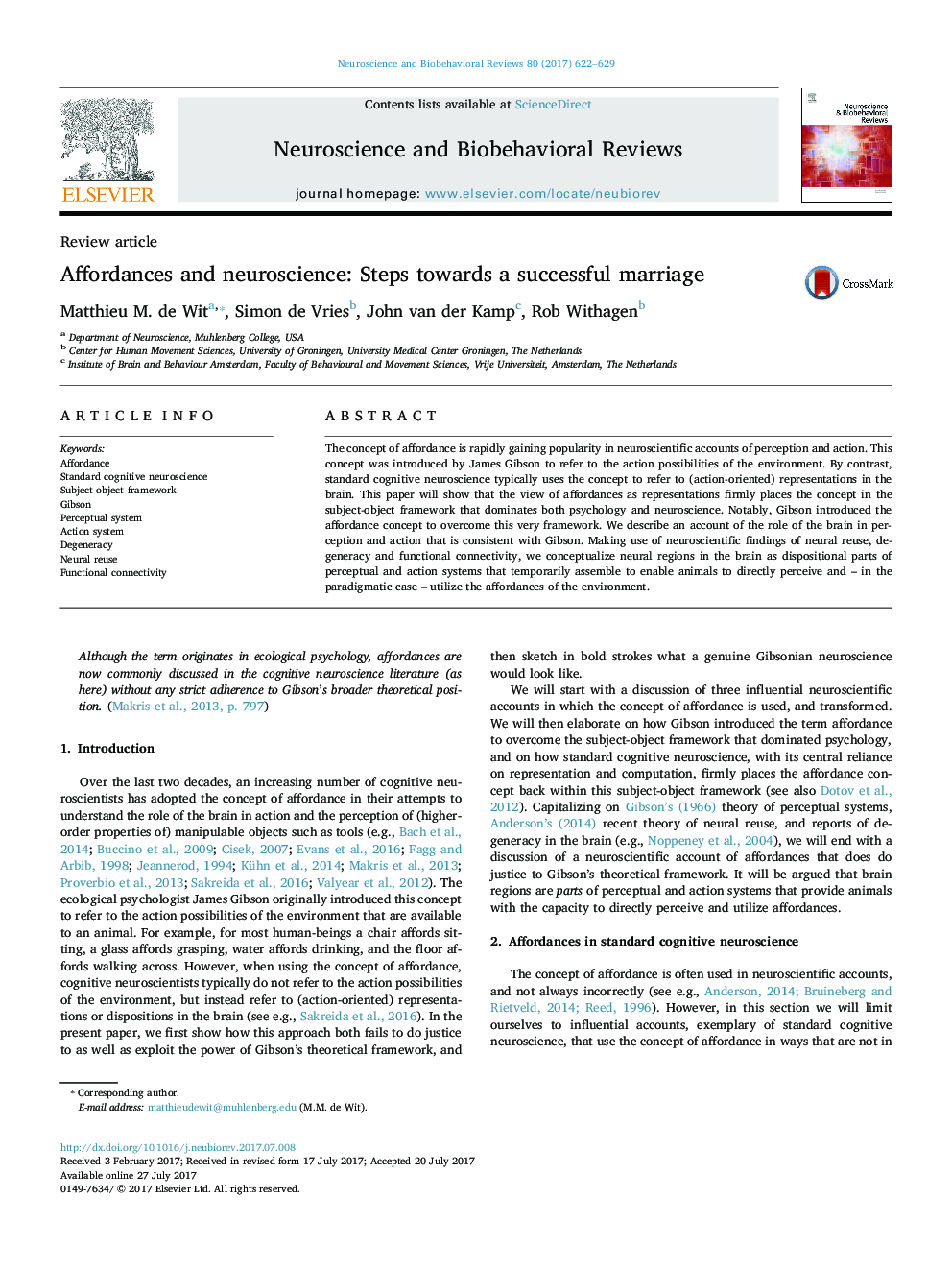| Article ID | Journal | Published Year | Pages | File Type |
|---|---|---|---|---|
| 5043469 | Neuroscience & Biobehavioral Reviews | 2017 | 8 Pages |
â¢Standard cognitive neuroscience uses Gibson's affordance concept to refer to action-oriented representations.â¢This reintroduces the subject-object framework, which Gibson sought to overcome.â¢We describe a neural account of affordances that is consistent with Gibson.â¢Brain regions are viewed as parts of action systems that temporarily assemble to utilize the affordances of the environment.
The concept of affordance is rapidly gaining popularity in neuroscientific accounts of perception and action. This concept was introduced by James Gibson to refer to the action possibilities of the environment. By contrast, standard cognitive neuroscience typically uses the concept to refer to (action-oriented) representations in the brain. This paper will show that the view of affordances as representations firmly places the concept in the subject-object framework that dominates both psychology and neuroscience. Notably, Gibson introduced the affordance concept to overcome this very framework. We describe an account of the role of the brain in perception and action that is consistent with Gibson. Making use of neuroscientific findings of neural reuse, degeneracy and functional connectivity, we conceptualize neural regions in the brain as dispositional parts of perceptual and action systems that temporarily assemble to enable animals to directly perceive and - in the paradigmatic case - utilize the affordances of the environment.
